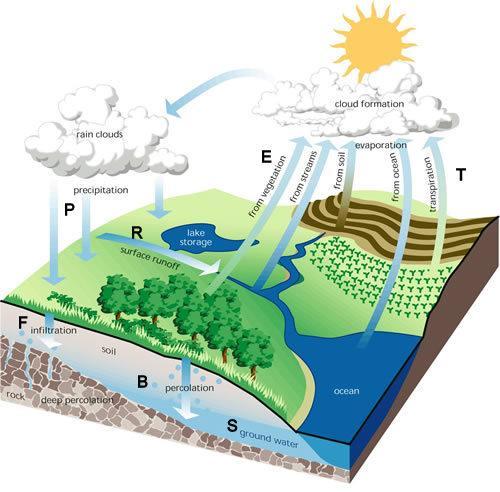Water balance is a concept used to understand the availability and the overall 'state' of water resources in a hydrological system. A hydrological system is usually a standard surface water unit such as a quaternary catchment or, in the case of theLimpopo River, a River basin. This concept is also sometimes referred to as a Water Budget.
This holistic approach takes into account all of the water inputs into the system and the extractions take out of the system or out of circulation.
Inputs include:
-
Precipitation - rain or snow
-
Groundwater influx from an adjacent aquifer or a transboundary (trans-riverbasin) aquifer
-
Snow melt
-
Inter-basin transfer - water transferred into the basin from an adjacent riverbasin
Extractions include:
-
Evaporation
-
Evapotranspiration
-
Extraction for consumptive use from streams and rivers - water for industrial ordomestic use and irrigation
-
Extraction for consumptive use from groundwater aquifers
-
Inter-basin transfer - water transferred out of the basin to adjacent river basin
A simple approach to a water balance equation could be considered as:
P + R + B - F - E -T = ΔS
Wanielista et al. 1997

Annotated Hydrologic Cycle.
Source:(adapted from) FISRWG 1998
( click to enlarge )
Where:
P = Precipitation
R = Runoff or excess rainfall
B = Subsurface flow
F = Infiltration
E = Evapotranspiration
T = Transpiration
S = Change in storage in the saturated zone - soil or groundwater
